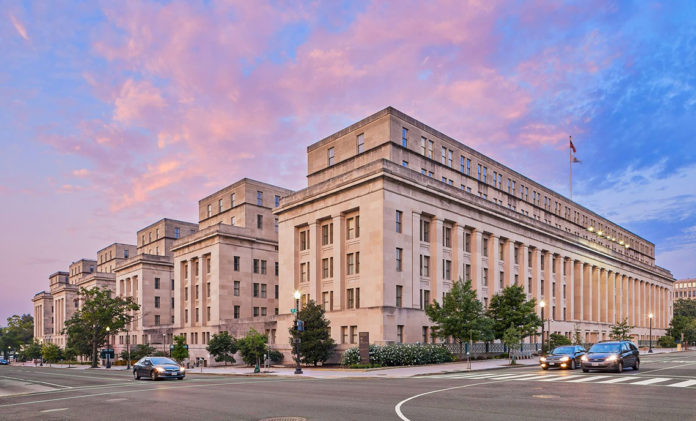WASHINGTON, D.C. – The Department of the Interior took two actions to help ensure millions of acres in Alaska are appropriately managed to protect the subsistence economy important to Alaska Native people and rural communities; conserve important fish and wildlife habitat; and balance extractive activities on public lands. These steps follow President Biden’s actions to protect millions of acres of lands and waters in the Arctic, including withdrawing approximately 2.8 million acres of the Beaufort Sea, ensuring the entire United States Arctic Ocean is off limits to new oil and gas leasing.
Following significant engagement with the public, Alaska Native tribes, and Alaska Native corporations, the Bureau of Land Management (BLM) finalized the Management and Protection of the National Petroleum Reserve in Alaska (NPR-A) rule that will ensure maximum protection for significant resource values on the more than 13 million acres of Special Areas in the western Arctic, while supporting subsistence uses and needs for Alaska Native communities. The BLM is also announcing that it will publish a Request for Information in the coming weeks to solicit public comment on whether to consider adding resource values to existing Special Areas, expanding Special Areas, or creating new Special Areas within the NPR-A.
The BLM also released its final supplemental environmental analysis for the Ambler Road project, which was proposed by the Alaska Industrial Development and Export Authority (AIDEA) and would span over 210 miles of significant wildlife habitat and pristine waters that are vital for subsistence along the iconic Brooks Range in north central Alaska. The BLM identified “No Action” as its preferred alternative, finding that each of the other alternatives would significantly and irrevocably impact resources, including those supporting important subsistence uses, in ways that cannot be adequately mitigated. The “No Action” alternative, if finalized in a Record of Decision, would mean that AIDEA would not receive a right-of-way to build the road across BLM-managed public lands.
“Since day one of the Biden-Harris administration, the Interior Department has maintained its commitment to restoring an appropriate balance between conservation and development,” said Secretary Deb Haaland. “Today’s announcements underscore our commitment to ensure that places too special to develop remain intact for the communities and species that rely on them. There is no question, using the best available science and incorporating Indigenous knowledge practiced over millennia, that these decisions will help biological, cultural, historic and subsistence resources, safeguarding the way of life for the Indigenous people who have called this special place home since time immemorial.”
“Today’s historic actions to protect lands and waters in the western Arctic will ensure continued subsistence use by Alaska Native communities while conserving these special places for future generations,” said John Podesta, Senior Advisor to the President for International Climate Policy. “With these new announcements, the Biden-Harris administration has now protected more than 41 million acres of lands and waters across the country, leaving a huge mark on the history of American conservation.”
Both the NPR-A rule and Ambler analysis come after several months of nation-to-nation consultations; robust public comment periods; and in-depth discussions with Alaska Native tribes and communities, corporations and organizations; hunters and anglers; conservation organizations; oil, gas and mining producers and industry experts; academics and other stakeholders.
Management and Protection of the National Petroleum Reserve in Alaska Rule
Under the Naval Petroleum Reserves Production Act (NPRPA) of 1976, as amended, Congress directed the BLM to balance oil and gas development with the management and protection of significant resource values in locations known as Special Areas and mitigate impacts of oil and gas activities on surface resources across the reserve. The final rule updates the existing regulatory framework, adopted more than 40 years ago, allowing the BLM to more effectively respond to changing conditions in the NPR-A, while striking a balance between oil and gas development and the management and protection of surface values, including wildlife habitat vital to subsistence.
Extending from the northwest slope of the Brooks Range to the Arctic Coast, the NPR-A encompasses roughly 23 million acres of public land managed by the BLM. Tribal nations have occupied lands now within the NPR-A since time immemorial, and more than 40 Indigenous communities continue to rely on the resources from the Reserve for subsistence, harvesting caribou, shore and waterbirds, and many other fish and wildlife species. Many communities subsist primarily on food that, in turn, relies on the Special Areas of the NPR-A. Natural conditions in the Arctic are changing rapidly due to climate change, which is affecting caribou movement and herd health, causing degradation of permafrost, and altering habitats for wildlife, migratory birds, and native plants throughout the NPR-A.
The final rule codifies protections for 13.3 million acres encompassed by the existing Special Areas, limiting future oil and gas leasing and industrial development in the Teshekpuk Lake, Utukok Uplands, Colville River, Kasegaluk Lagoon, and Peard Bay Special Areas – places collectively known for their globally significant intact habitat for wildlife, including grizzly and polar bears, caribou and hundreds of thousands of migratory birds. The rule also codifies existing prohibitions on new leasing in 10.6 million acres, more than 40 percent of the NPR-A, consistent with the current NPR-A Integrated Activity Plan (IAP).
Similarly, the rule clarifies management requirements in Special Areas, while providing clear guidelines for development that protect subsistence resources throughout the NPR-A – also consistent with key provisions of the current IAP – and ensuring protection of valid existing rights. This allows the BLM to more effectively fulfill its obligations to Tribal nations and meet the requirements of the NPRPA and other federal laws.
The BLM first proposed the rule in September 2023. More than 100,000 comments were received during the public comment period, including from Alaska Native tribes, corporations, communities and organizations; hunters and anglers; conservation organizations; oil and gas producers; industry experts; academics; and other stakeholders. The BLM held multiple in-person meetings and informational sessions, including in Nuiqsut, Utqiagvik, Wainwright, and Anchorage.
Final Supplemental Environmental Impact Statement for Proposed Ambler Road
The Ambler Road as proposed by AIDEA would traverse more than two hundred miles along the Brooks Range, crossing lands managed by the BLM, National Park Service, the State of Alaska, and several Alaska Native corporations. There are no current mines in the area and no mine plan proposals pending before the federal government. The funding model to build, maintain and mitigate the impacts of the road is speculative: AIDEA would finance the road through funds from investors by selling bonds, and the bonds would be paid off over time by charging annual fees to mining companies who would eventually use the Ambler Road.
The BLM prepared the Final Supplemental Environmental Impact Statement (EIS) to address deficiencies related to subsistence impacts and to ensure compliance with applicable laws, including the National Environmental Policy Act, Federal Land Policy and Management Act, National Historic Preservation Act, and Alaska National Interest Lands Conservation Act (ANILCA), after a federal district court remanded a 2020 analysis to the BLM. The analysis released evaluates the same range of alternatives and routes as the 2020 EIS, but more thoroughly analyzes the proposed project’s substantial impacts to biological, cultural, historic and subsistence resources, including caribou and fish.
The BLM also conducted a detailed analysis of the project’s potential subsistence impacts under Section 810 of ANILCA. The analysis found that more than 60 Alaska Native communities would experience restrictions on their subsistence and, of those, more than 30 would experience significant restriction of subsistence uses should the road be constructed.
The analysis released details how the project would require over 3,000 stream crossings and could impact at risk wildlife populations, including sheefish, the already-declining Western Arctic caribou herd, and other subsistence resources. In addition, the analysis found that irreparable impacts to permafrost would make it unlikely the road could be reclaimed, and that it is reasonably foreseeable that the industrial road would be used by the public, increasing impacts.















































